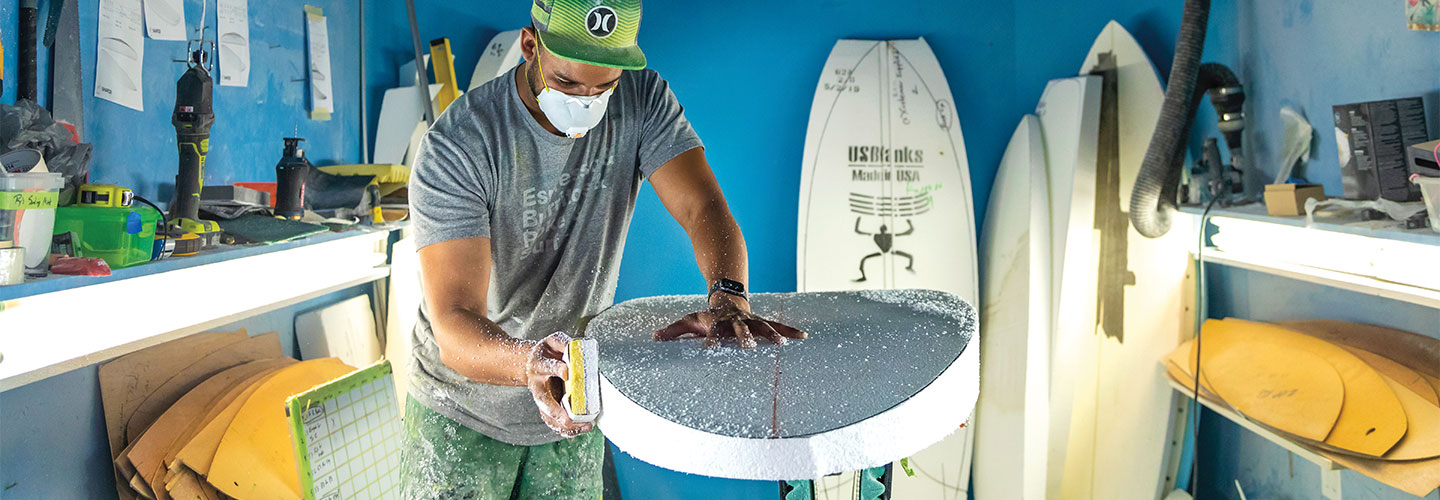Every morning, Ryan Harris wakes up and rolls out of bed by 5:30 a.m. An hour later, he’s catching waves as the sun rises over Los Angeles, California. Harris surfs on a one-of-a-kind board he made out of recycled materials and eco-friendly supplies. “One of the things I love most is that I get up and go surf on something I made with my own hands,” he says.
Harris is the owner of Earth Technologies, a company that creates sustainable surfboards and paddleboards. Sustainable products meet people’s needs while having a limited impact on the environment. Harris fell in love with surfing more than 20 years ago. But he later found out that the materials used to make surfboards are incredibly toxic for the people crafting them—as well as for the planet. Harris spoke with Science World about his journey to invent a safer and greener way to build surfboards.

